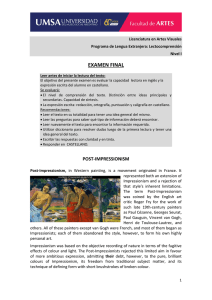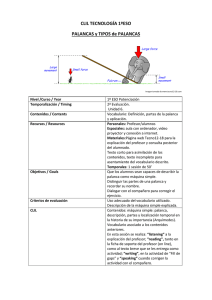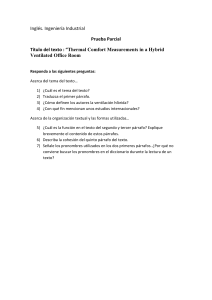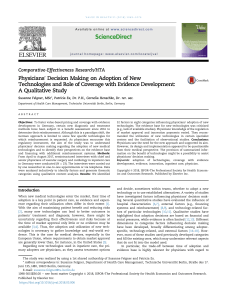examen final
Anuncio
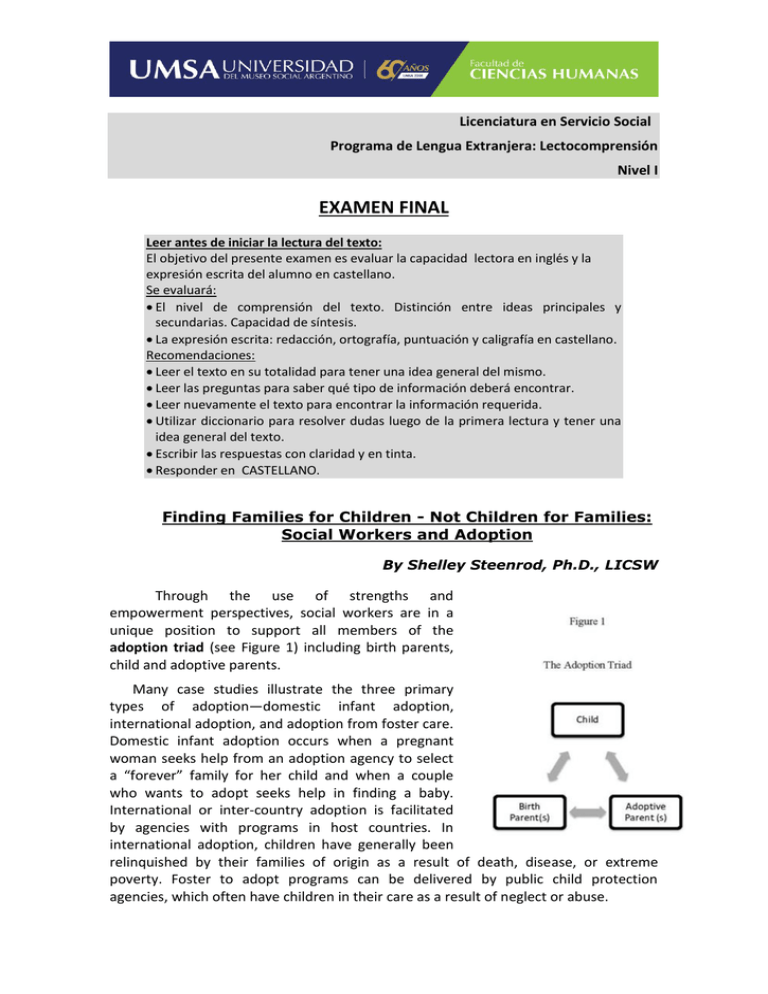
Licenciatura en Servicio Social Programa de Lengua Extranjera: Lectocomprensión Nivel I EXAMEN FINAL Leer antes de iniciar la lectura del texto: El objetivo del presente examen es evaluar la capacidad lectora en inglés y la expresión escrita del alumno en castellano. Se evaluará: El nivel de comprensión del texto. Distinción entre ideas principales y secundarias. Capacidad de síntesis. La expresión escrita: redacción, ortografía, puntuación y caligrafía en castellano. Recomendaciones: Leer el texto en su totalidad para tener una idea general del mismo. Leer las preguntas para saber qué tipo de información deberá encontrar. Leer nuevamente el texto para encontrar la información requerida. Utilizar diccionario para resolver dudas luego de la primera lectura y tener una idea general del texto. Escribir las respuestas con claridad y en tinta. Responder en CASTELLANO. Finding Families for Children - Not Children for Families: Social Workers and Adoption By Shelley Steenrod, Ph.D., LICSW Through the use of strengths and empowerment perspectives, social workers are in a unique position to support all members of the adoption triad (see Figure 1) including birth parents, child and adoptive parents. Many case studies illustrate the three primary types of adoption—domestic infant adoption, international adoption, and adoption from foster care. Domestic infant adoption occurs when a pregnant woman seeks help from an adoption agency to select a “forever” family for her child and when a couple who wants to adopt seeks help in finding a baby. International or inter-country adoption is facilitated by agencies with programs in host countries. In international adoption, children have generally been relinquished by their families of origin as a result of death, disease, or extreme poverty. Foster to adopt programs can be delivered by public child protection agencies, which often have children in their care as a result of neglect or abuse. Whether public or private, domestic or international, adoption agencies hire social workers to conduct home studies, provide pre-adoption education, match children with families, and offer post-adoption support. A brief description of each service is described below. Home Study is the process by which a social worker decides the suitability of an individual or couple to adopt. It is a comprehensive evaluation of each potential adoptive parent’s emotional and physical health, experience or ability to parent, finances, home environment, and general ability to provide a safe, consistent, and nurturing family for a child. A home study generally involves meeting with and interviewing the individual or couple over several sessions. The social worker asks specific questions such as: “Why adopt?”, “What is your parenting philosophy?”, “How do you resolve conflicts?” among others. Ultimately, the social worker writes a formal home study document that is submitted to domestic and international courts and governments as appropriate. Pre-Adoption Education, in order to provide a clear and real picture to preadoptive parents with romantic notions of what parenting is like, prepares families for both the realities of first-time parenting and the challenges of parenting children from hard beginnings. Some examples of workshops and trainings that social workers facilitate in this domain include topics such as: grief and loss, attachment, the effects of institutionalization, cross cultural issues, transracial parenting, and open adoption. Matching Children with Families is the service related with finding the best family for children, not the best child for families. As such, they rarely make child placement decisions in a vacuum. Most agencies have committees that meet regularly to consider the mutual needs of children and families and to make matching decisions together. In these profound decisions, social workers can utilize their hard-earned knowledge on child development, human behavior, child and family welfare, research, cultural diversity, and values and ethics. Post-Adoption Support is therefore required after adoption and social workers become an important part of the triad. Individuals and couples who adopt are not only faced with the same challenges of first time parents; they may also be faced with special issues—especially when adopting internationally or from foster care. Children from hard beginnings may bring with them a host of medical, neurological, emotional, and behavioral problems and require extra support and specialized parenting and educational strategies. Retrieved from: http://www.socialworker.com/feature-articles/practice/findingfamilies-for-children-social-workers-adoption/ ALUMNO REGULAR: 1. Responda las siguientes consignas en forma clara y precisa (4 puntos): 1.1. ¿Qué tipos de adopción presenta el texto y cuáles son sus características principales? 1.2. ¿Qué diferencia existe entre “Home Study” y “Pre-Adoption Education? 1.3. Subraye un infinitivo de propósito. 1.4. Indique si esta frase es verdadera o falsa, y justifique su respuesta: Conforme a lo expresado en el artículo, los casos de “inter-country adoptions” se generan ante el abandono del niño por parte de la familia biológica que no quiere continuar con la crianza del mismo. 2. Resumen: Resuma, en no más de 150 palabras, las ideas principales del texto. Recuerde NO traducir sino redactar lo que ha comprendido, con coherencia y cohesión. Utilice un registro formal, sin abreviaturas y con letra clara. (6 puntos) ALUMNO LIBRE: 1. Responda las siguientes consignas en forma clara y precisa (4 puntos): 1.1. ¿Qué definición de “adoption triad” puede inferirse del primer párrafo y del gráfico que acompaña al texto? ¿Qué relevancia tiene la práctica del trabajador social en este contexto? 1.2. ¿Qué funciones cumple el trabajador social, conforme a lo expresado en el artículo? 1.3. ¿Qué importancia tiene la frase “Post-Adoption Support” en el texto? Justifique. 1.4. Indique si esta frase es verdadera o falsa, y justifique su respuesta: Una vez que el trabajador social visita a la potencial familia adoptiva y le realiza una serie de preguntas, está en condiciones de emitir un documento con la resolución de la adopción. 2. Subraye en el texto lo que se le solicita (no olvide agregar el número correspondiente de la consigna) (2 puntos): 2.1. Una proposición adjetiva reducida (Reduced Relative Clause). 2.2. Un verbo en la voz pasiva del presente perfecto. 2.3. Un presente participio en función adjetiva. 2.4. Un infinitivo de propósito. 3. Resumen: Resuma, en no más de 150 palabras, las ideas principales del texto. Recuerde NO traducir sino redactar lo que ha comprendido, con coherencia y cohesión. Utilice un registro formal, sin abreviaturas y con letra clara. (4 puntos)
